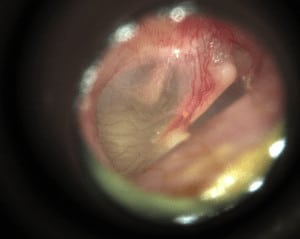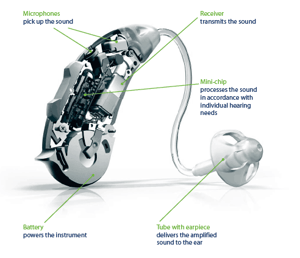Time to Read: 30 minutes
Hearing aids are designed to help maximise your hearing. Unfortunately some people give up wearing them as they don't seem to work for them. This article examines key hearing aid issues:
- Clinical factors that affect your hearing aid experience
- Poor speech understanding in quiet
- Poor speech understanding in noise
- Deterioration in your ability to understand speech in noise
- Loudness tolerance issues
- Fluctuating hearing loss
- Changing hearing
- Your ever-changing brain
- Severe or profound hearing loss
- Technical limitations of hearing aids you need to consider
- Blocked microphones, speakers and other common faults
- How well has your hearing aid been set up
- How much sound a hearing aid can process
- Pick up distance limits of hearing aid microphones
- Performance limits of directional microphones in noise
by Christo Fourie
A story I hear more often than I'd like to, is one where you buy the most expensive hearing aid you can afford, only to be sorely disappointed by its performance once the honeymoon period has passed. The most challenging situations, such as when you really need to hear in a restaurant where there is plenty of background noise seems to be one of the biggest culprits.
For some unfortunate souls, hearing properly when it's quiet can be a challenge as well. This is a very frustrating situation, especially if you were lead to believe that a top end hearing aid will let you hear normally in all environments.
There are many reasons for this. Sometimes, the hearing aid you chose was simply not the right one. At other times, you may simply have had unrealistic expectations. We have a few articles dealing with overcoming the incomplete way in which hearing aids are selected in Australia and over the world.
What makes it worse is the way hearing aids are marketed and listed online. It conveys the message that you are responsible for deciding which is best for you. This of course is not the case as too many clinical factors, that you have no experience with, could play a major role in your overall outcome.
In fact, hearing aids are simply a step in achieving an outcome and certainly not the be-all and end-all for everyone.
Below we will discuss the personal (clinical) issues that could affect hearing aid performance for you. We will then continue to discuss the common, but little known, technical limitations of hearing aids that could be causing you some trouble.
Clinical factors that affect your hearing aid experience
- Poor speech understanding in quiet
- Poor speech understanding in noise
- Loudness tolerance issues
- Fluctuating hearing loss
- Deterioration in your ability to understand speech in noise
- Changing hearing
- Your changing brain
- Severe or profound hearing loss
Poor speech understanding in quiet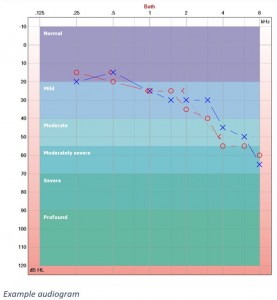
You have to keep in mind that your ear is simply the microphone to the brain. In most cases of hearing loss, the ear (the microphone) is damaged, but the brain which is responsible for making sense out of sound is still functioning normally.
One test that is commonly used to determine your ability to understand speech in quiet consists of a number of short words, played to you in a sound proof environment through calibrated equipment. You are then required to repeat those words. The clinician can then calculate the percentage of words or sounds that you repeat correctly. This score represents your maximum speech understanding (discrimination) score.
If you scored well in this test, then a properly fit hearing aid should allow you to hear well in quiet. If you did poorly in this test, then a hearing aid will likely not allow you to hear more than the best score you achieved in this test.
Speech understanding in quiet is not the only factor that can lead to dissatisfaction with hearing aids. Speech understanding in noise is the most common complaint clients have with hearing aids.
Poor speech understanding in noise
Speech understanding in noise is probably one of the most variable factors in any hearing test. There is no way to predict how well a person will do with this test without actually doing the test. Ironically this test is also one of the least common tests conducted during a hearing assessment, while also being one of the most important.
![]()
It is important because if you score average in this type of testing, then you can expect hearing aids to work as they are marketed. Premium hearing aids work well in lots of noise, while basic hearing aids can't cope with too much noise etc.
Most people are, however, not average. Some people score much better than average, meaning they are likely to do very well even with less expensive hearing aids. Without knowing this, you'd be led to believe you need to pay much more to do well with hearing aids in noise than you actually need to.
Other people perform much worse than average and for these folks, even the best hearing aid will not deliver satisfactory performance even in the presence of a little noise. This is exaggerated by the fact that you would expect to do well, based on how hearing aids are advertised. So the outcome and expectations do not match.
When speech in noise testing is performed, and then used to match your performance to that of specific hearing aids, outcomes can be significantly improved by not over-prescribing expensive features that you do not require. It also helps bring realistic expectations to light well before the decision on a specific hearing aid is made, avoiding disappointment when your speech understanding in noise is poor.
Deterioration in your ability to understand speech in noise
Even if your hearing aid was selected using speech in noise testing, your performance with the hearing aid might still gradually deteriorate over time. This comes down to changes due to age or other factors, in how the brain deals with speech in noise.
The hearing aid has a fairly fixed ability to deal with background noise. If your requirements exceed the ability of the hearing aid to clean noise from speech, then your hearing ability in noise will seem to get worse.
If this happens to you, it might be time to consider upgrading the hearing aid if it is several years old. Alternatively, you may look at adding some of the accessories mentioned later to improve their performance.
Loudness tolerance issues
You may have hypersensitivity to loud noise, which can be painful. It is important to mention this to your hearing specialist or audiologist. This information should then prompt them to check your loudness tolerance levels during testing. With this information on hand, they can select and set a hearing aid that will restrict how much loud noise reaches your ears.
Without this information, hearing aids can become uncomfortable quickly and could easily lead to disappointment.
Fluctuating hearing loss
Some conditions such as middle ear problems or Meniere's disease can cause your hearing to fluctuate from time to time.
This poses a problem when you use hearing aids, as they are typically set for a fixed level, of which you can change the volume only. With fluctuating hearing loss, it is not simply the volume of hearing that changes, but also the shape of your hearing loss. A drop in hearing can also introduce distortion in the ear, which affects hearing temporarily.
Your audiologist needs to have knowledge of and experience in how to deal with these kind of fluctuations. If they don't then you are likely to be less than satisfied with the performance of your hearing aids over time.
Changing hearing
When you undergo a hearing test, the results are a snapshot of your hearing ability in time. Hearing does not normally change very quickly, without a medical condition driving it, but it can change in spurts.
If your hearing has changed since your hearing aids were first set up to your specific hearing loss level, then you will not be as happy with the settings as you initially were.
Your ever-changing brain
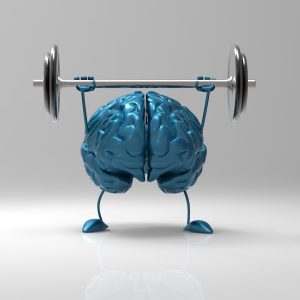 Your brain is a fantastic organ, which thrives on making sense of an ever-changing environment. It does so by building new connections which have come into use and disconnecting those that are disused.
Your brain is a fantastic organ, which thrives on making sense of an ever-changing environment. It does so by building new connections which have come into use and disconnecting those that are disused.
If you use hearing aids consistently, the brain adapts to this new input and what was new and novel becomes normal. This can lead to the hearing aid, which may have been initially set not to overwhelm the brain, to seem less effective than it used to be. A simple adjustment made by your hearing care professional can often fix this.
On the flip side, if you only use the hearing aids when you feel you need them, then your hearing loss is considered the "normal" and you never develop optimal connections in your brain to get the best out of your hearing aids. Using your hearing aids for more than 8 hours a day where possible can help.
Severe or profound hearing loss
Clients with severe or worse hearing loss have very different needs to those with less significant hearing loss. With hearing loss this severe, the outcome is also very dependent on when the hearing loss developed.
Clients who acquired this type of hearing loss very early in life have very different needs compared to those who developed significant hearing loss later in life. Those who had worn hearing aids for several decades with this kind of hearing loss have different needs to those who have only recently started using powered hearing aids.
Clients with long-standing severe to profound hearing loss
These clients often need to be fitted with hearing aids that are set to be more like their previous hearing aids, rather than trying to fit them to the standard protocols which assumes they had normal hearing at some time in the recent past. Very often this client prefers the sound of the older, now unavailable, analogue hearing aids to the compressed sound of modern digital hearing aids.
This group of clients need a clinician who understands their needs and who is able to fine tune a digital hearing aid to sound as close as possible to their previous hearing aid, rather than to some arbitrary prescription.
This group often uses hearing aids to augment their great lipreading abilities, so do not rely as much on the modern technologies as other groups. They can still benefit from accessories such as FM systems discussed below.
Clients who had near normal hearing and had progressed to severe to profound hearing loss
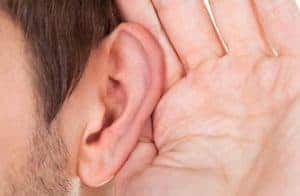 These clients' brains and their ability to understand speech has developed normally as they once enjoyed normal or close to normal hearing. They tend to benefit from modern hearing aid technology, but are constrained by the limitations of the severity of their hearing loss.
These clients' brains and their ability to understand speech has developed normally as they once enjoyed normal or close to normal hearing. They tend to benefit from modern hearing aid technology, but are constrained by the limitations of the severity of their hearing loss.
In order to understand how the hearing loss can limit benefit from hearing aids, one needs to understand the amazing capability of a normal human ear to process sound.
The human ear has an incredibly dynamic range, i.e. the difference between the softest sound we can hear and the loudest sound we can tolerate. The softest sound we could hear with a normal ear is as low as 0dB while the loudest sound is 110dB or more. This is a logarithmic scale, so the the loudest sound a human ear can tolerate is around 100,000 times louder than the softest sound we can hear!
When we have a severe hearing loss the softest sound we can hear is 70dB, while the level of the loudest sound we can tolerate stays at 110dB or so. This means that instead of a 110dB dynamic range, like we have with normal hearing, our range of sound levels are reduced. Now we can only hear a 40dB range of sound (less than a 1,000 times difference between the softest and loudest sounds our ears can handle).
Considering speech has a range of fluctuation of 40dB, this causes some problems when amplifying speech. When a hearing aid makes speech louder, it has to do so without making loud speech too loud (as the level we tolerate cannot be altered) and causing distortions. Hearing aids often ignore the softer parts of speech to avoid causing distortion, while squishing loud sounds to prevent them from becoming damaging.
Hearing loss this severe often comes with poor speech understanding in quiet and in noise.
Technical limitations of hearing aids you need to consider
- Blocked microphones, speakers and other common faults
- How well the hearing aid has been set up
- How much sound the hearing aid can process
- Pick up distance limits of hearing aid microphones
- Performance limits of directional microphones in noise
Blocked microphones, speakers and other common faults
A hearing aid is a finely tuned precision instrument with tiny microphones for picking up sound and a speaker for delivering the sound into your ear, corrected for your individual hearing loss. We have an article detailing the workings of a hearing aid here, if you are interested in learning more.
Hearing aids are worn in very harsh conditions for thousands of hours a year. The are exposed to dust, moisture, ear wax, body oils (which can also be acidic) and frequent handling.
It is a testament to their build quality that they do not stop working more frequently than they do.
The most common reason for a hearing aid to lose performance is the blockage of the sound outlet in your ear due to wax or debris. Weekly cleaning can help tremendously with this.
Microphones can also become blocked or damaged by oils, moisture or even hair spray. Regular brushing is advised to keep these clean.
No matter how frequently you clean hearing aids, performance will drift over time. As such, a 6 monthly visit to your audiologist is recommended to ensure everything keeps working optimally.
We have an article on troubleshooting hearing aids, if you wish to learn more.
A note on hearing aid batteries:
Years ago I worked for a large company who decided they wanted to save money by reselling, at a high margin, the cheapest hearing aid batteries they could obtain. Soon after, I realised that we had many more repairs come in than before. Purely by accident I gave some of these clients some extra batteries, of high quality, and their problems disappeared.
Always make sure you get the best quality battery you can. Great brands are PowerOne and Rayovac. Avoid purchasing hearing aid batteries from chemists as they tend to sell poorer brands and often have batteries close to expiry date.
We have a useful article on getting the best out of your hearing aid batteries here.
How well has your hearing aid been set up

A hearing aid is simply a tool to help improve your hearing. There is great variability in how a hearing aid can be set up to obtain optimal performance.
Hearing aids bought online tend to be set to first fit, which assumes you have an average ear. These "first fit" settings can deliver instant benefit, but your brain quickly gets used to them. Once this happens you will notice you aren't doing that much better than without the hearing aids.
Another issue with this approach is that the fit is often not as comfortable as it can be. Lack of comfort is one of the main reasons people give up on wearing hearing aids. We have an article dealing with the issue of non-use over time here.
Professionally fit hearing aids are fit with you in front of the clinician. Your audiologist will have a look in your ears to determine ear health and sizing as well as any odd turns or bends than might affect the hearing aids' performance.
The audiologist can also measure the hearing aid in your ear, to ensure that it is individualised for your ear size and shape as well as your preferences. The hearing aid might be initially turned down to improve your initial acceptance. This will allow your brain to gradually get used to hearing well again, without overwhelming it.
Follow-up visits are crucial to ensure that the hearing aid is delivering what you set out to achieve. During these visits further individualised tweaks may be made.
Unfortunately, this is where it stops with many providers. Once you are happy, you are left to your own devices and told to call the clinic when you have a problem.
You may not actually end up calling the clinic to bring up an issue, however. Most issues happen gradually. It is human nature to then assume that it has always been like that. At other times, you feel you need a visit but are concerned about the cost, so you decide to let it slide a little more. This often leads to hearing aids ending up in drawers rather than in ears.
It is recommended that you ask your provider whether they have regular, preferably six monthly, recalls/reminders in place where you are invited back to have your ears, hearing and hearing aids checked. This ensures you have ongoing optimal benefit.
We have another article dealing with what a long term hearing aid journey should look like for optimal long term benefit.
Remember, you always have a choice to get a second opinion as to how the hearing aid has been set up. Call around and see if there is someone local, with good reviews that could look at your hearing aid set-up. This may however incur a charge, but is worth the improvement in hearing this can bring without having to fork out for new hearing aids.
How much sound a hearing aid can process
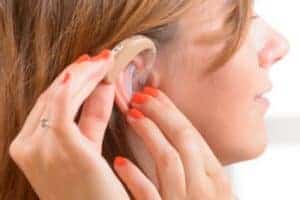
Hearing aids are basically tiny computers, dedicated to processing sound. Older computers are slower and less powerful than newer computers.
Older hearing aids tend to handle less information due to slower, less powerful computers driving the aid. This means that some compromises were made to allow the most important sounds of speech to be processed within the limits of the hearing aid. Often soft sounds were ignored, while loud sounds were squished to make it all fit into the chip at one time. This often resulted in hearing where you can hear normal speech well, but distant or soft speech is very difficult. It also leads to loud sounds becoming jumbled together, which affects your hearing in noise.
I have an article talking more about the features found in the best hearing aids that actually make a difference.
Some retailers cheaply sell older technology with these limitations, under their own brands. Others try to get rid of old stock, like the Alta2 Pro, currently on special. Make sure you only ever purchase the latest technology to avoid artificial limitations to your hearing, when there is no need to be.
If you have an older aid, you may choose to upgrade if these limitations are causing you difficulties. A lot has changed in hearing aids over the last four or five years.
Pick up distance limits of hearing aid microphones
Hearing aid microphones are tiny, yet they can deal with a huge range of sound from very soft to very loud without distorting or breaking. They do, however have some limits due to their tiny size.
One limit that is helpful to understand is that they can pick up speech over distances to a maximum of around 7 metres. This is due to the fact that for every two metres sound travels, it halves. So by the time normal level speech reaches the hearing aid after travelling 8 metres, the softer parts of the speech will be below what the microphone can detect.
Performance limits of directional microphones in noise
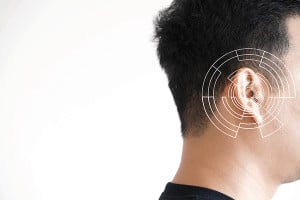 Difficulty hearing speech in noise is one of the biggest complaints with people with hearing loss. Most hearing aids, except the very smallest in-the-ear models, make use of special microphones to improve hearing in noise.
Difficulty hearing speech in noise is one of the biggest complaints with people with hearing loss. Most hearing aids, except the very smallest in-the-ear models, make use of special microphones to improve hearing in noise.
By using two distinct microphones, a hearing aid can zoom into the speech in front of you, while reducing the speech noise next to and behind you. This is one of the only proven ways to improve speech hearing in noise, but it has a limitation.
As the hearing aid zooms forward, the pick up distance of the microphones in front of you reduce. The more "zooming" takes place, the shorter the distance. The directional microphones with the most forward focus, has a limit of around 1.5 metre pickup in front of you.
This will leave you lacking if the person you want to hear is more than that distance away or if the person speaking to you is right next to you. Here is another article that deals with getting the best out of hearing aids in noise.
Summary
Hearing aids are wonderful devices that can improve your quality of life dramatically.
They do however come with some limitations. Being aware of the limitations of hearing aids is important for establishing realistic expectations.
Proper hearing aid selection, combined with regular maintenance and check-ups are important for getting long term benefit.
Make sure your hearing aid technology is up to date with your needs.
Contact your hearing care professional if you are having difficulties as there often is a way to improve your hearing. You are not in your journey alone, make use of the expertise of your audiologist.
